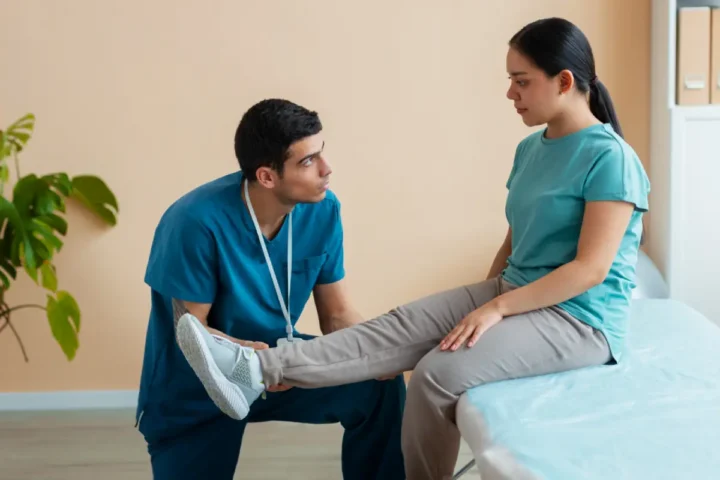Paths to a Rewarding Career in Rehabilitation Sciences
Rehabilitation sciences provide a dynamic career path for those interested in improving lives through recovery, movement, and functional independence. This field includes physical therapy, occupational therapy, speech-language pathology, and prosthetics. As healthcare systems prioritize holistic care, demand for skilled professionals grows. Exploring various paths in rehabilitation sciences offers a fulfilling profession and a lasting impact on others’ well-being and quality of life.

What Is Rehabilitation Sciences?
Rehabilitation science is a multidisciplinary field that focuses on restoring, developing, and maintaining physical, mental, and social functioning for those affected by illness, injury, chronic health conditions, or disability. Practitioners play pivotal roles in various settings, including hospitals, rehabilitation centers, schools, community clinics, and home health environments.
One reason for this growth is greater access to specialized education, such as online respiratory therapy programs, which provide flexible pathways for individuals with busy schedules or those balancing work with education. Rehabilitation sciences prepare students for clinical competence and adaptability in a diverse sector.
As societal awareness of rehabilitation’s value grows, professionals help clients regain independence and optimize daily living. The field spans all ages and backgrounds, from developmental disorders to aging or chronic diseases. Professionals must constantly learn new research findings, community resources, and best practices. They partner with healthcare providers, social workers, and families to create personalized recovery solutions.
Diverse Career Options in Rehabilitation Sciences
Rehabilitation sciences offer many career opportunities, including physical, occupational, speech-language pathologists, and respiratory therapists. These professionals help clients improve mobility, adapt to daily life, and address speech, language, and swallowing disorders. They also lead community programs, design rehabilitation protocols, research, and manage organizational initiatives.
Case managers coordinate multifaceted programs; those interested in teaching can teach at universities or mentor interns. These diverse career opportunities provide clinical and non-clinical-minded individuals with a fulfilling and stable career.
Skills and Qualifications Employers Seek
Rehabilitation sciences employers seek candidates who combine technical expertise with soft skills. Most positions require a degree in a relevant field; additional credentials are needed for independent practitioners. Successful professionals are known for their critical thinking, adaptability, and lifelong learning. They must stay updated on treatment protocols, therapy methods, and patient safety principles.
Soft skills include empathy, patience, and clear communication. Rehabilitation is not done in isolation, and professionals must coordinate with medical teams, schools, workplaces, or caregivers for holistic support. They are expected to participate in continuing education workshops, credential upgrades, and evidence-based training.
The Rewards and Challenges of Rehabilitation Careers
Rehabilitation professionals enjoy the intrinsic rewards of helping people recover from injuries, developmental delays, or long illnesses, building relationships, and providing motivation. They witness life-changing transformations and are grateful for their knowledge and encouragement.
However, the role can be emotionally and physically demanding, with slow progress and setbacks. Resilience and robust self-care practices are essential for success. Supervisory support, professional counseling services, and peer networks are crucial for thriving in this challenging yet rewarding sector.
Continuing Education and Future Opportunities
Rehabilitation sciences require lifelong learning to stay updated on evidence-based treatments, technology upgrades, and best practices. Practitioners can deepen their expertise through conferences, workshops, and advanced certifications. Opportunities for career advancement include clinic management, academic research, advocacy campaigns, or university teaching. Specialization in pediatric, geriatric, or neurological rehabilitation can unlock high-impact work. Proactively seeking new knowledge and skillsets creates innovation in the sector.
Trends Driving Demand in Rehabilitation Sciences
Demand for rehabilitation professionals has never been higher, mainly due to societal and demographic shifts. The Bureau of Labor Statistics Healthcare Occupations Guide shows a strong employment outlook for careers like occupational and physical therapy, primarily fueled by an expanding elderly population and greater numbers of people living with chronic illnesses or the aftereffects of traumatic injuries.
Rapid technological advancement is transforming patient care delivery. Developments in telehealth have reduced barriers for those in rural or underserved communities, while wearable sensors and apps allow for continuous progress tracking from home. The use of assistive robotics and virtual reality therapy is rising, bringing a new level of customization and engagement to recovery plans. These tools empower professionals to provide tailored, high-quality support, regardless of a patient’s physical location.
Industry Developments and the Road Ahead
Interdisciplinary teamwork is increasingly prevalent in the rehabilitation sciences, with physicians, therapists, social workers, and families working together to design effective rehabilitation plans. Advanced technology, such as robot-assisted mobility training and virtual reality environments, is reshaping the field, offering meaningful change and collaboration opportunities. This challenging, evolving profession offers unmatched opportunities to improve lives daily.


